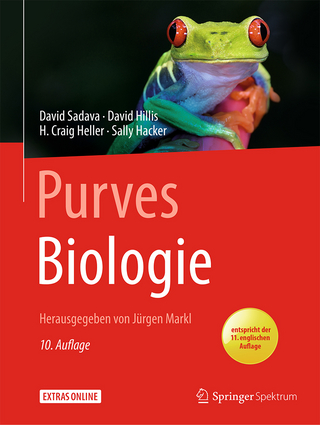
Handbook of Biological Confocal Microscopy
Kluwer Academic / Plenum Publishers (Verlag)
978-0-306-43538-6 (ISBN)
- Titel ist leider vergriffen;
keine Neuauflage - Artikel merken
In addition, the two groups decided to join forces with EMSA to provide there was an optical micro-analysis session emphasizing Raman the organization and the venue for a Confocal Workshop and techniques, organized by the Microbeam Analysis Society, for NSF to provide the financial support for the speakers expenses a total of 40 invited and 30 contributed papers on optical tech- and for the publication of extended abstracts.
1: Foundations of Confocal Scanned Imaging in Light Microscopy.- Light microscopy.- Lateral resolution.- Axial resolution.- Depth of field.- Confocal imaging.- Impact of video.- The Nipkow disk.- Electron-beam scanning TV.- Impact of modern video.- Lasers and microscopy Holography.- Laser illumination.- Laser-illuminated confocal microscopes.- Laser scanning confocal microscope.- Is laser scanning confocal microscopy a cure-all?.- Speed of image or data acquisition.- Depth of field in phase dependent imaging.- Some other optical and mechanical factors affecting confocal microscopy.- Lens aberration.- Unintentional beam deviation.- Note added in proof.- Acknowledgment.- References.- 2: Fundamental Limits in Confocal Microscopy.- What limits?.- Counting statistics.- Source brightness.- Specimen response.- A typical problem.- Practical photon efficiency.- Losses in the optical system.- Objectives.- Mirrors.- Pinhole.- Is the confocal pinhole a "good thing"?.- Features of the confocal pinhole.- Detection and measurement losses.- The detector.- The PMT.- Solid-state photon detectors.- Digitization.- Evaluating photon efficiency.- Resolution: how much is enough?.- Can resolution be too high?.- Limitations imposed by spatial and temporal quantization.- Aliasing.- Pixel shape.- Blind spots.- Practical considerations relating resolution to distortion.- Summary.- Acknowledgements.- References.- 3: Quantitative Fluorescence Imaging with Laser Scanning Confocal Microscopy.- The promise of scanning confocal fluorescence microscopy.- Optical transfer efficiency.- Methods of measurement of optical transfer efficiencies.- Confocal spatial filtering for depth of field compromises optical transfer efficiency.- Optical aberrations in fluorescence LSCM.- Chromatic aberrations in fluorescence LSCM measurements.- Photodynamic effects.- Theory.- Population rate equations.- Experiment.- Fluorescence photobleaching recovery with LSCM.- Conclusion.- Acknowledgments.- References.- 4: The Pixelated Image.- Pixelation.- Optical resolution: the resel.- Pixel.- Gray level.- In between.- Matching image spatial characteristics.- The Nyquist theorem.- Hyper-resolution: oversampling.- The resel/pixel ratio.- Diagonal dropout.- Pixel shape distortion.- Aliasing.- The mechanics of pixelation.- Matching image intensity characteristics.- Gray scale.- Detection.- Display.- Color displays.- Caveats.- Spectral variation of detectors.- Automatic gain control.- Strategy for magnification and resolution.- Acknowledgements.- References.- 5: Laser Sources for Confocal Microscopy.- Laser power requirements.- The basic laser.- Principle of operation.- Laser modes: longitudinal and transversal.- Polarization.- Coherent properties of laser light.- Temporal coherence.- Coherence length.- Spatial coherence.- Coherence surface.- Coherence volume.- Pumping power requirements.- Heat removal.- Other installation requirements.- Types of lasers.- Continuous wave (cw) lasers.- Gas lasers.- Argon-ion.- Krypton.- Helium-neon.- Helium-cadmium.- Dye lasers.- Solid state lasers.- Semiconductor or diode injection lasers.- Diode-pumped lasers.- Tunable solid state laser.- Pulsed lasers.- Nitrogen lasers.- Excimer lasers.- Metal vapor lasers.- Q-switched lasers.- Trends in time-resolved spectroscopy applied to microscopy.- Wavelength expansion through non-linear techniques.- Spatial beam characteristics.- Intensity fluctuations of cw lasers.- Maintenance.- Maintenance of active laser media.- Laser tubes.- Gases.- Dyes.- Laser rods.- Maintenance of pumping media.- Maintenance of the optical resonator.- Maintenance of other system components.- Cooling water.- External optics.- Safety precautions.- Curtains.- Screens.- Beam stops.- Acknowledgement.- References.- 6: Non-Laser Illumination for Confocal Microscopy.- Why use non-laser sources?.- Wavelength.- Coherence.- Which types of confocal microscope can use nonlaser sources?.- Characteristics of non-laser light sources.- Wavelengths available.- Source radiance.- Source stability.- Source coherence.- Source distribution.- Collecting the light and relaying it to specimen.- Illumination of the specimen: a basic part of microscopy.- Tandem scanning: basic description.- Single-sided disk scanning: basic description.- How do you uniformly illuminate both the objective back focal plane and the intermediate image plane?.- Scrambling and filtering the light.- Measuring what comes through the illumination system.- Exposure time and source brightness.- Stationary specimens.- What if the specimen is moving or changing?.- Incoherent laser light sources for confocal microscopy.- References.- 7: Objective Lenses for Confocal Microscopy.- Abstract.- Aberrations of refractive systems.- Defocusing.- Monochromatic aberrations.- Spherical aberrations.- Coma.- Astigmatism.- Flatness of field.- Distortion.- Chromatic aberrations.- Longitudinal chromatic aberration.- Lateral chromatic aberration (LCA) or chromatic magnification difference.- Finite versus infinity optics.- Optical materials.- Anti-reflection coatings.- Conclusion.- 8: Size and Shape of the Confocal Spot: Control and Relation to 3d Imaging And Image Processing.- Abstract.- Pinholes and optical probe formation.- Practical use of variable pinholes.- Experimental axial confocal response.- Comments and conclusions.- References.- 9: The Intermediate Optical System of Laser-Scanning Confocal Microscopes.- Design principles of confocal systems.- Overview.- Microscope objectives.- Position of the pivot point.- Position of the detector pinhole.- Practical requirements.- Illumination.- Detection.- Distortion.- Evaluation of illumination/detection systems.- Influence of optical elements on the properties of light.- Errors caused by optical elements.- Evaluation of optical arrangements.- Evaluation of scanner arrangements.- Disk scanners.- Object scanners.- Attachment to microscopes.- Merit functions.- Requirements for multi-tluorescence experiments.- Special optical elements.- Multi-mode optical glass fibers.- Single-mode polarization-preserving glass fibers.- Polarizing elements.- Mechanical scanners.- Acousto-optical scanners.- Conclusions.- Acknowledgements.- References.- 10: Intermediate Optics in Nipkow Disk Microscopes.- The tandem scanning reflected light microscope (TSRLM).- The real-time scanning optical microscope (RSOM).- Images of the eye.- Pinhole size.- Pinhole spacing.- Illumination efficiency and reflection from the disk.- Internal reflections.- Acknowledgements.- References.- 11: The Role of the Pinhole in Confocal Imaging Systems.- The optical sectioning property.- The optical sectioning property with a finite-sized circular detector and coherent light.- Lateral resolution as a function of effective detector size.- The role of aberrations.- Images with a finite-sized detector 118 Extended-focus and auto-focus imaging with a finite-sized detector.- Height imaging with a finite-sized pinhole.- Alternative detector geometries.- Noise.- Fluorescence imaging.- Conclusions.- References.- 12: Photon Detectors for Confocal Microscopy.- The quantal nature of light.- Interaction of photons with materials.- Photoconductivity.- Photovoltaic.- Charge coupled devices.- Photoemissive.- Image dissector l.- Micro channel plate.- Noise internal to detectors.- Statistics of photon flux and detectors.- Representing the pixel value.- Conversion techniques.- Assessment of devices.- Point detection optimization.- Field detection optimization.- Detectors present and future.- References.- 13: Manipulation, Display, and Analysis of three-Dimensional Biological Images.- Storage of three-dimensional image data.- Image enhancement.- Linear filters.- Median filters.- Local contrast enhancement.- Gradient method.- Processing methods for displaying 3D data.- Stereo images.- 3D rotations.- Rotated projections.- Pixar displays.- Contour surface representation.- Graphic system for 3D image display and analysis.- Details of PRISM's design and implementation.- The window system.- Digital movies.- Choice of display hardware.- Model building in PRISM.- Model building.- Superimposing the model on a background image.- Future development and discussion.- Acknowledgements.- References.- 14: Three-Dimensional Imaging on Confocal and Wide-Field Microscopes.- Signal to noise ratio and resolution.- Signal strength, photo-damage and photo-bleaching.- Optical transfer function, resolution and noise.- Three-dimensional image restoration and confocal microscopy: a comparison.- Image restoration methodology.- Requirements.- Results.- Multiple detector confocal miscroscopes.- Conclusions and recommendations.- Computer graphics 3D visualization.- Display of 2D slices of 3D data.- Volume displays.- Surface model displays.- 3D perception from 2D displays.- User interaction and analysis.- Automated image analysis: feature extraction and computer vision.- Thresholding.- Human interaction and partial automation.- Fully automated analysis.- Computer hardware considerations.- Image acquisition.- Image restoration.- Image analysis and display.- Archival storage.- Magnetic disks.- Cartridge magnetic tape.- Reel magnetic tape.- Optical disk.- Networking.- Conclusion.- References.- 15: Direct Recording of Stereoscopic Pairs Obtained Directly from Disk Scanning Confocal Light Microscopes.- Summary.- Use of a confocal microscope to reduce the depth of field.- Optical sectioning in the TSRLM.- Direct photographic recording of the stereo-pair.- Means for stereo imaging of a layer inside a bulk.- Fixed tilt angle difference: hand-operated device.- DC micromotor-controlled stage.- Piezo-electric control of the lens.- Top or bottom overlap?.- Stereopairs generated from one through-focus pass.- Topographic mapping.- Color coding without a computer.- Depth limitation.- Particle counting.- Geometric properties of the stereo images.- Discussion: TSRLM or LSCM?.- Acknowledgements.- References.- 16: Fluorophores for Confocal Microscopy: Photophysics and Photochemistry.- Photophysical problems related to high intensity excitation.- Singlet state saturation.- Triplet state saturation.- Contaminating background signals.- Rayleigh and Raman scattering.- A utofluorescence from endogenous fluorophores.- What is the optimal intensity?.- Photodestruction of fluorophores and biological specimens.- Dependency on intensity or its time integral?.- Theory.- Experiment.- Protective agents.- Strategies for signal optimization in the face of photobleaching.- Light collection efficiency.- Spatial resolution.- Fluorophore concentration.- Choice of fluorophore.- Fluorescent indicators for dynamic intracellular parameters.- Membrane potentials.- Ion concentrations.- Wavelength ratioing.- pH indicators.- Ca2+ indicators.- Other forms of ratioing.- Future developments?.- Acknowledgments.- References.- 17: Image Contrast in Confocal Light Microscopy.- Sources of contrast.- Confocal microscopy in back scattered mode.- Signal formation.- Backscattered light contrast on stained specimens.- Reflection contrast on non-biological specimens.- Backscatter contrast on living specimens.- The effect of overlying structures.- Absorption contrast.- Artificial contrast.- Transmitted confocal image.- Confocal microscopy in epi-fluorescent mode.- Countermeasures.- Acknowledgement.- References.- 18: Guiding Principles of Specimen Preservation for Confocal Fluorescence Microscopy.- Critical evaluation of fixation and mounting methods.- Theoretical considerations.- The use of the cell height to evaluate the fixation method.- The use of cell height to evaluate mounting media.- Well defined structures can be used to evaluate fixation methods.- Comparison of in vivo labeled cell organelles with immunolabeled cell organelles.- Fixation methods.- Glutaraldehyde fixation.- Stock solutions.- Preparation of stock solutions.- Fixation protocol.- The pH shift/paraformaldehyde fixation.- Stock solutions.- Preparation of the stock solutions.- Fixation protocol.- Immunofluorescence staining.- Mounting the specimen.- General notes.- Labeling samples with two or more probes.- Ramifications of techniques to preserve the specimens.- Conclusion.- Acknowledgements.- References.- 19: A Comparison of Various Optical Sectioning Methods: The Scanning Slit Confocal Microscope.- Non-Confocal Optical Sectioning.- Confocal Optical Sectioning.- Scanning Mifror/Slit Microscope.- Optical Sectioning: Experimental and Theoretical.- Scanning Mirror/Slit System.- Confocal Pinhole System.- Theoretical Comparison of Slit and Pinhole Systems.- A Possible Improvement in Pinhole Confocal Systems.- A Possible Improvement in the Slit Scanning System.- Examples of Images Obtained with the Divided Aperture Scanning Slit System.- Summary Comparison of Slit and Pinhole Confocal Svstems.- Slit system.- Inherent advantages.- Practical advantages of divided aperture system as described.- Single pinhole confocal systems.- Inherent advantages.- References.- Bibliography on Confocal Microscopy.
| Zusatzinfo | 207 black & white illustrations, biography |
|---|---|
| Verlagsort | Dordrecht |
| Sprache | englisch |
| Themenwelt | Naturwissenschaften ► Biologie |
| ISBN-10 | 0-306-43538-1 / 0306435381 |
| ISBN-13 | 978-0-306-43538-6 / 9780306435386 |
| Zustand | Neuware |
| Haben Sie eine Frage zum Produkt? |
aus dem Bereich


